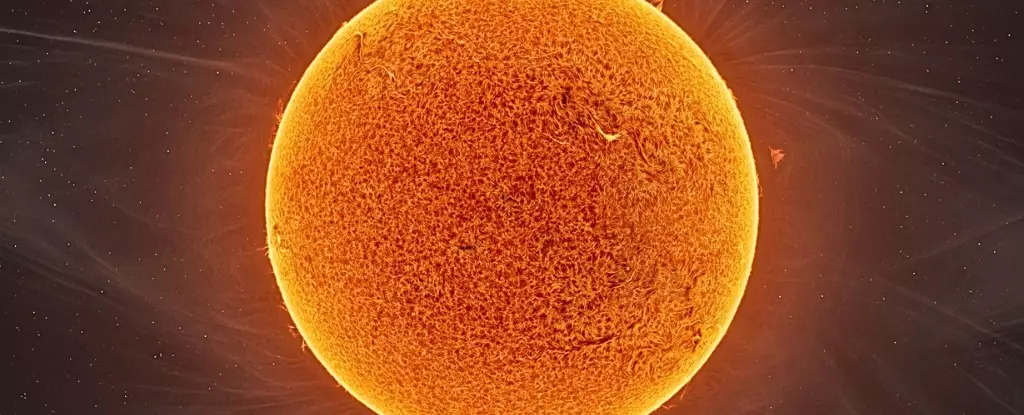In the grand orchestra of the universe, where celestial bodies hum the tunes of creation and destruction, the phenomenon of starquakes emerges as a cornerstone for understanding the cosmos. Previously underestimated, the vibrations produced by these seismic waves rippling through stars, particularly giant stars within clusters like M67, have now been revealed as a potent source of insights into stellar evolution, internal dynamics, and the history of our galaxy. Recent findings published in Nature underscore this transformation in our understanding, demonstrating that the seismic signatures of starquakes can provide invaluable data about stars that were once thought to be mere celestial objects.
Starquakes occur when bubbles of gas burst within a star’s outer layer, creating vibrations that resonate through its structure, much like the ripples caused by a stone thrown into a calm pond. The Kepler space telescope’s K2 mission has made it possible to monitor these vibrations across thousands of light years, once again illustrating how technology can expand our view of the universe. For astronomers, these vibrations do not simply constitute noise; they represent a unique language that can unravel the complexity hidden beneath a star’s observable phenomena.
Understanding the Unique “Song” of Stars
Every star possesses its own musical composition, shaped by its mass, age, and chemical makeup. These distinct frequencies, particularly pronounced in clusters like M67, provide palpable clues about stellar conditions and evolution. For instance, larger stars produce slower, deeper vibrations, while their smaller counterparts resonate at higher frequencies. Historically, scientists believed that certain frequency characteristics, known as small spacings, offered limited insight into the internal workings of older red giants. However, recent studies have challenged this narrative, revealing that these spacings can inform us about deeper layers of stellar structure and fusion processes.
The research conducted on M67 giants has unveiled fascinating aspects of these small spacings. Previously, it was assumed that the transition from hydrogen-burning cores to inert inner regions offered little new information. Yet, the dynamics of hydrogen-burning shells have now shown themselves to be more intricate. As these shells thicken and move inward—a phenomenon mirroring physical changes observed in aging stars—the resonance frequencies display notable variations, sometimes even experiencing “stalling” at pivotal evolutionary moments. This stalling, much like a record skipping, indicates a significant transition in the star’s life, marking a turbulent stage within its deep envelope.
Implications for Stellar Evolution and Galactic History
The findings surrounding starquakes have far-reaching implications beyond the confines of a single star. Much like how fossils reveal the stories of ancient life on Earth, the seismic signatures of stars hold the key to piecing together the narrative of our galaxy. The Milky Way has evolved through the merging of smaller galaxies, with star formation occurring under varying conditions. By refining our understanding of stellar ages through the analysis of starquakes, we can deduce the timelines and locales of star development, further illuminating the complex tapestry of cosmic evolution.
This research significantly enhances our ability to trace the history of stars akin to our own Sun. M67 not only serves as a laboratory for investigating stellar ages but also offers a forward-looking perspective on the Sun’s future. As we peel away layers of complexity surrounding these giant stars, we garner insights into the eventual fate of our own star, enabling us to contextualize the journey of solar evolution over billions of years.
A New Lens for Astronomical Discovery
Astrophysics is characterized by its relentless quest to decipher the unknown, leveraging the interplay of light and sound to glean insights from the cosmos. The revelations surrounding starquakes have reinvigorated this pursuit, offering an innovative lens through which to examine stellar phenomena. As scientists revisit archived seismic data from various stars across the Milky Way, they encounter the exciting possibility of discovering previously overlooked patterns.
The knowledge gleaned from starquakes endows astronomers with a newfound tool for stellar characterization, enabling them to identify stars in specific life phases and refine age estimations with heightened precision. This process of revisiting old data through fresh perspectives embodies the essence of scientific inquiry, allowing us to reinterpret celestial melodies that might have gone unheard.
With the ability to listen into the very soundscape of the universe, we are reminded that each of the stars in the sky has a story to tell. Harnessing this acoustic information about starquakes not only broadens our understanding of stellar life cycles but also reveals the intricate connections that lie behind the fabric of our galaxy. The music of the stars has truly become a symphony of knowledge, resonating with the potential to transform our understanding of the universe—a harmony worth exploring.


Leave a Reply